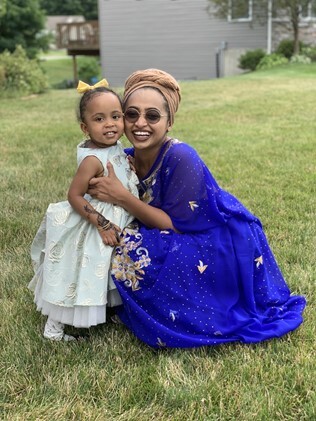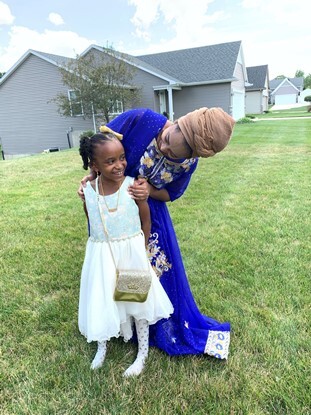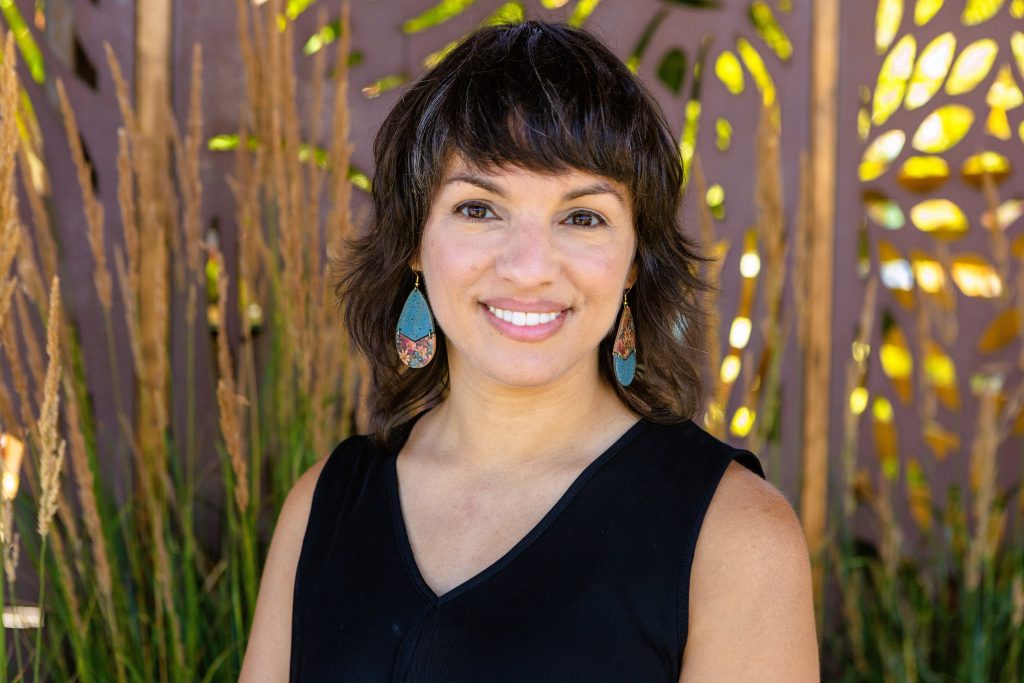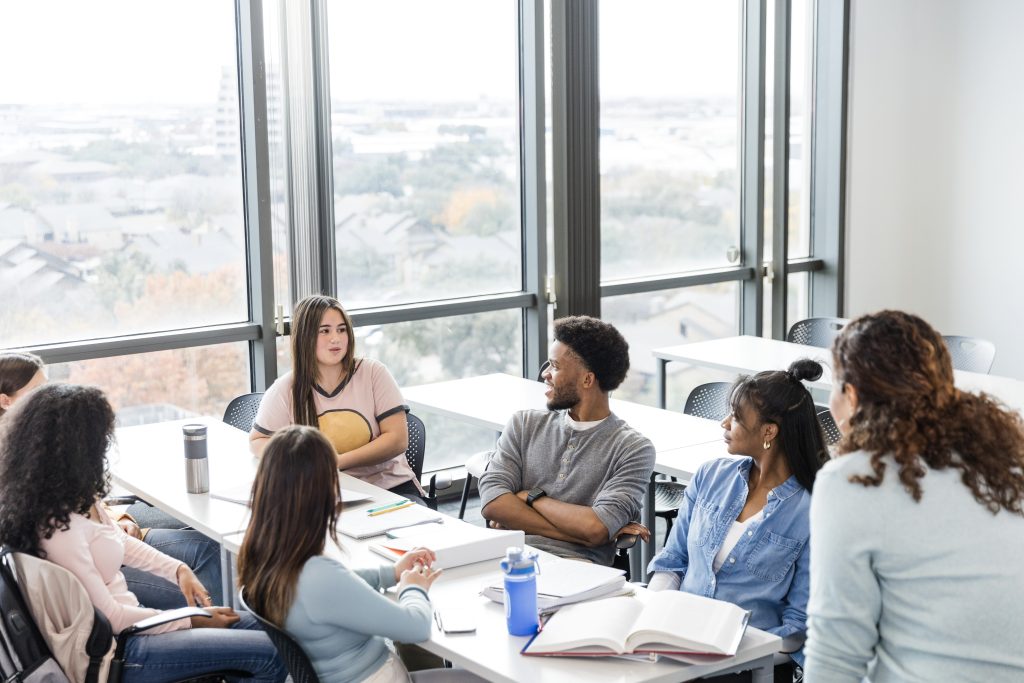Teaching with Community and Liberation
November 9, 2020
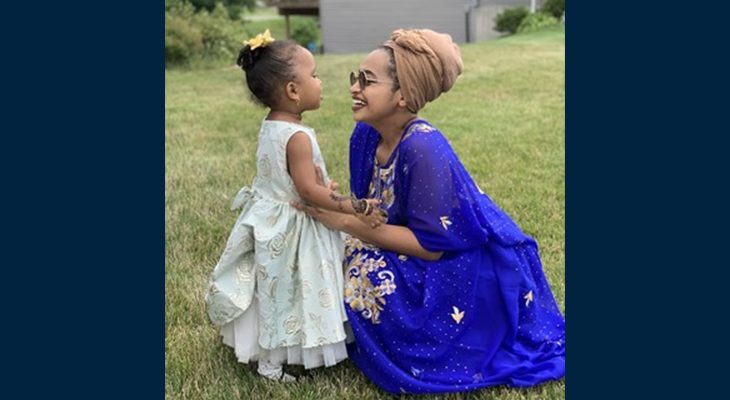
Amina Mohamed is an elementary school teacher at an independent progressive school in New York City, and a 2020 Interfaith America Racial Equity Fellow. She previously taught English Learners from immigrant and refugee backgrounds in Michigan.
“all the women
in me
are tired” -Nayyirah Waheed
It took a global pandemic and national revolution for me to come to terms with all the fatigue I’m experiencing. Mentally, physically, emotionally, and spiritually. And it’s in this moment that I’ve consciously made an effort to rest and heal. In this journey, I’ve spent a lot of time reflecting on the state of education, what it means to be a classroom teacher, and more importantly: what radicalized me as a teacher?
My understanding of the world and of myself didn’t come from formal education. As an immigrant, who also comes from multiple generations of immigrants and refugees, education always came from the community. Institutions and formal pedagogies are oppressive spaces that I have never felt welcome in. As a child, I vividly remember moments wondering why characters in my favorite books didn’t look and sound like me. Why the stories I wrote and made up never reflected the realities of my experiences. Why the stories my parents told me were never taught in schools. Nonetheless, I continued reading and exploring and eventually found writers and storytellers who affirmed me. I also found the vocabulary to articulate the oppressive structures that constantly made me feel inadequate. And it is through this journey, of learning and unlearning, that I’ve slowly come to value my community and the educators within it who molded my values and politics.
I grew up in a family that depended on the community for survival. While my parents were very active in my upbringing, there were so many other people who were responsible for educating and caring for me. My parents also depended on our community to help raise me.
My mother along with several other women had monthly circles where they contributed money that eventually helped pay for my private school education. It’s also this money that helped fund our groceries and my college applications. For the longest time, I thought this was how everyone’s parents acquired extra income for survival. These community circles played a quintessential role in my understanding of finances and how families provided for their children. My father constantly reminded us that if we ever had any extra food, it was our duty to share the surplus with our neighbors and friends. In short, if I’m good, everyone around me should be too. Both my parents were teachers at some point in their lives and this was my first introduction to educators: people who played roles in caring for the community outside the classroom.
The teachers I knew taught phonics on Mondays and cooked meals to feed communities at night. They taught addition on Tuesdays and opened their homes for women experiencing domestic violence later that night. They taught maps on Wednesdays and were providing free childcare in their homes for families who couldn’t afford it. Education went beyond the classroom. The teachers I knew educated and took care of children and families. By any means necessary. While they didn’t always vocalize it publicly, they knew that institutions and governments constantly found ways to reimagine violence and oppression. They also knew that their survival depended on looking out for each other.
In looking back to this as an adult, I can’t help but wonder: what is the connection between community and liberation? How does our dependence on communal care help us reimagine a world where liberation for all is possible?
When I eventually decided that I wanted to become a teacher, I knew from day 1 that teaching is political and therefore teachers are too. I’m reminded of all the teachers I know who have informed my understanding of education and the role of educators outside of formal institutions. When I enrolled in a teacher preparation program, I didn’t have the language to describe the discomfort I experienced daily in my classes and the curriculum. However, I knew from my upbringing that institutions were never places that were welcoming towards folks like me: a visibly Black Muslim woman. An immigrant. The daughter of nomads. The granddaughter of oral storytellers. The list goes on. While I did have a seat at the table like my white peers, I knew the curriculum wasn’t made with me in mind. Instead, it catered towards teaching white educators how to teach in “urban” and “diverse” communities
Little thought was put into intentionally creating curriculums dedicated to equipping Black and teachers of color with the tools and resources to be successful. So, while my peers read Teaching with Love and Logic (which I also read), I was reading The New Jim Crow too. I was thinking about the lives of my students in and out of school. I was concerned about the school to prison pipeline. I was thinking about the heavy policing of Black and Brown children in schools. Knowing that my education was happening outside the classroom constantly made me feel lonely and isolated. While I didn’t trust institutions, I knew that I still had power as a teacher in the classroom to shift the narrative and create a space where Black children, like myself, would feel affirmed. I promised myself to never let any child feel unseen and unheard in the school curriculum.
As I continued in my teacher prep program I quickly learned how schools prescribed Eurocentric curriculums that were oftentimes also emotionally violent towards Black children. I had to ask myself what kind of teacher I wanted to be. What does it mean to live and teach in the same community as my students? What does it mean to cook and go to the funerals of my students’ families and teach them reading the following week? I went back to the drawing board and remembered my parents and the communities of teachers I knew who did more than just teach content. They loved, cared, and protected their students in unconventional ways.
Then Trayvon Martin happened. And Tamir Rice. And Sandra Bland. And Ahmed “the clock boy” Mohamed. And George Floyd. And Breonna Taylor. And the countless others whose names were erased and forgotten. In the midst of a global pandemic, Black political resistance, and abolitionist frameworks entering educational spaces, what does it mean to live and teach from a liberatory lens that extends freedom and communal care? What does it mean to be a teacher in a country that constantly inflicts state-sanctioned violence towards Black people? What does it mean to live in a country that refuses to provide basic needs to its people? I knew that I couldn’t depend on institutions that have failed Black children to equip me, their teacher, with the resources to teach them. So I looked back and reached out to the folks whom I knew have done this work before me: my community. They consisted of educators, organizers, parents, refugees, neighbors, and elders. I listened and learned with and from them. Then, I rolled up my sleeves, lesson plans, and taught. I had to restructure the curriculum so that it reflected the realities of my students and their experiences. In my classroom, we learned about Indigenous people instead of Christopher Columbus. We learned that the police aren’t there to protect people. We learned that laws aren’t always fair. We learned that heroes can look like us and don’t have to water down their identities to fulfill their dreams. We learned about Islamic, Buddhist, and Pagan holidays. We cried, laughed, and learned together. We envisioned a world outside of our own realities
My upbringing and lived experiences have radicalized me and continue informing my values and politics. In a country and world that does not value Black life, it is my moral obligation to love, listen, and care for Black children. It is also my duty to create space where they can engage in radical thought and reimagine a better world for themselves.
Share
Related Articles
American Civic Life
Racial Equity
Immigrant Faith Communities On Rooting Out Anti-Black Racism
American Civic Life
Eboo Patel and Wajahat Ali: Is “Interfaith America” Even Possible?
